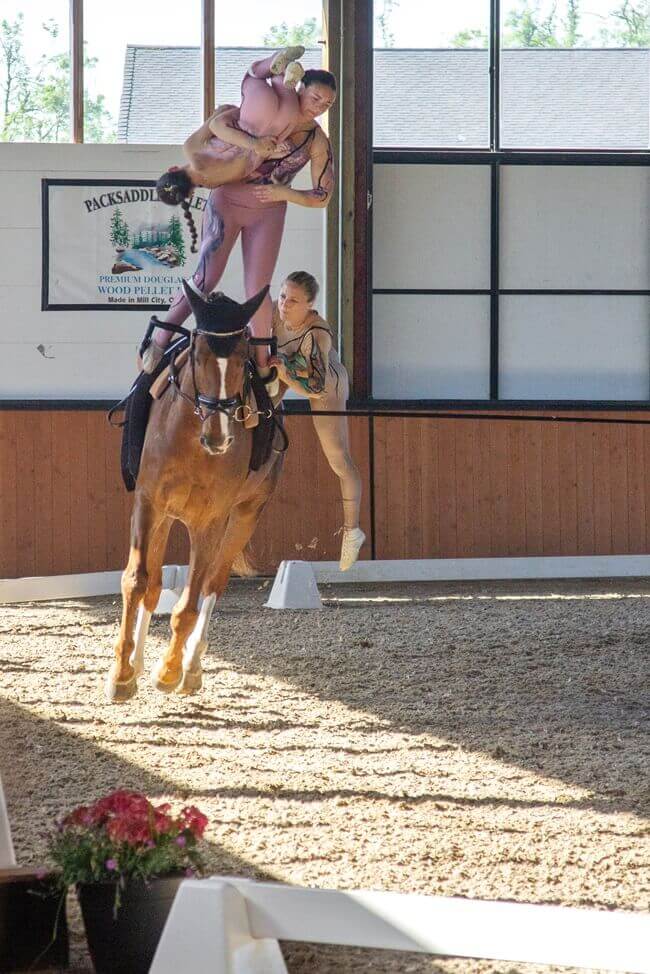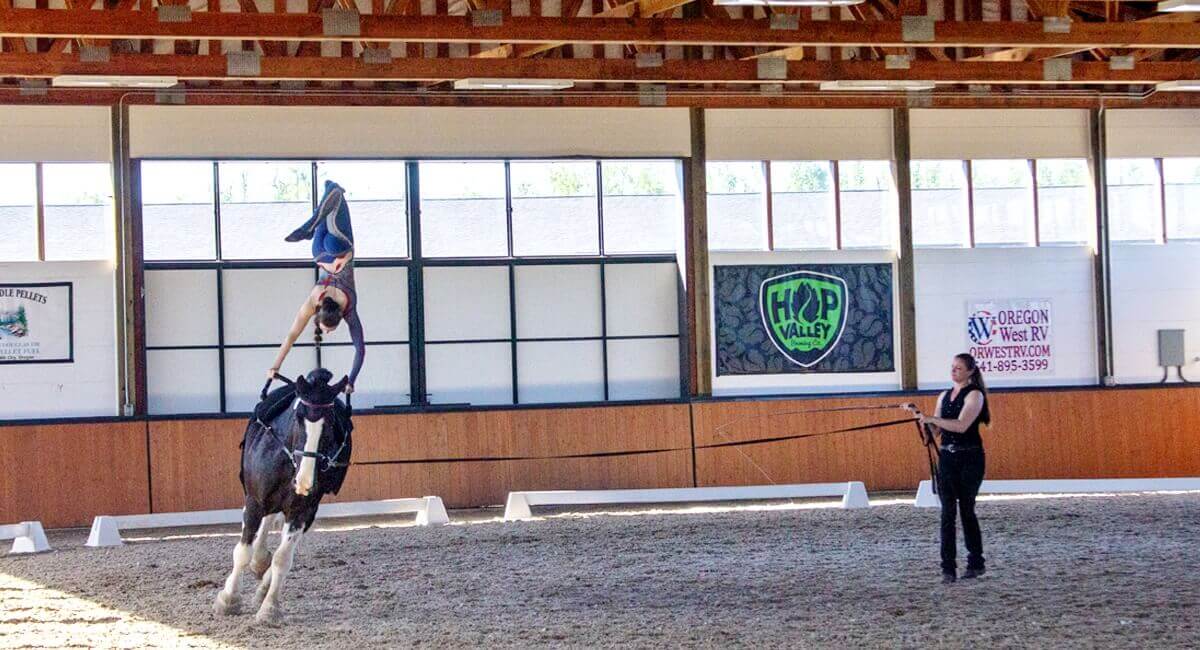First Ever International Level Vaulting Event Held at Silver Tail Farm
On May 9–12, 2024, Silver Tail Farm in Creswell, Oregon wrapped up a two-day equestrian gymnastics competition which drew vaulting clubs from all over North America for its first appearance in Oregon.
The Mozart Memorial Vaulting Classic is a vaulting competition recognized by two national vaulting associations: Equestrian Vaulting USA (EVUSA) and the United States Equestrian Federation (USEF). Thursday and Friday saw international competitions, while Saturday and Sunday’s shows were at the national level. Athletes ranged from ages 3 to 27.
Vaulting is an equestrian sport that melds elements of dance, theater, and gymnastics. Vaulters perform acrobatic routines on a lunged horse. Judges evaluate riders on a variety of metrics. According to The Fédération Equestre Internationale (FEI) guidelines, these criteria include technique, execution, strength, connection with the horse, artistic merit, and music use.

Organizer Patty Littmann founded The Mozart Memorial Vaulting Classic in Southern California in the 1990s, naming it after an old vaulting horse of hers who loved working with children. Originally a national competition, the event saw international competitors for the first time this year.
“I keep doing more and more for vaulting and less and less for other equestrian disciplines because I enjoy what I see,” Littmann said. “I enjoy the people and the love everybody has for each other and for the horses.”
Competitive vaulting is sustained by regional clubs which provide horses, equipment, and training facilities for athletes. Within these clubs, smaller teams of up to six people work together at competitions, accumulating points throughout the season with the goal of qualifying for national or international championships.
This competition, which has never been hosted in Oregon, included clubs from all over the U.S. and featured everything from 3-year-old beginners to world-class vaulters in their mid-twenties.
Vaulting is both an individual and team sport. Solo freestyle routines are one-minute long, while pas de deux (two-person) routines are longer. Up to three vaulters will ride the horse at once. Competitions involve compulsory exercises, such as standing upright on the horse, and freestyle routines, which vaulters choreograph with their coaches.
Canadian vaulter Talmage Conrad has been involved in the community since he was 14, when he switched from traditional gymnastics. Now 22, Conrad competes for West Coast Vaulters, a club based out of Vancouver Island. He’s traveled to Europe several times to attend the vaulting world championships, and he’s headed there again this summer.
“What really drew me to the sport was the opportunity to not only travel but also do what I love while traveling and seeing the world,” Conrad said. “I get excited about [going to the championships] every year.”
The discipline of vaulting dates to ancient European times, when it was used to assimilate young people to horses. Learning to move with the horse’s body before controlling it with reins was thought to produce more balanced and confident riders. According to Conrad, vaulters must have intimate relationships with their horses to maintain the trust required for the sport. “It’s a partnership. You need your horse to do well for you to do well,” Conrad said. “It doesn’t happen all the time, but when you are really vibing… it’s quite amazing.”
The nature of vaulting often leads to humane questions regarding the health and safety of the horses involved. Outsiders may see horses running in circles while people jump around on their backs as inhumane and reckless. According to Littmann, however, horse welfare is of paramount importance to the vaulting community. “The horses are treated better than the people are, let me tell you,” Littmann said.
Before they can be used for vaulting, horses must first be trained extensively in dressage, another equestrian discipline in which trainers control the specific, subtle movements of the horse. The athletes, meanwhile, practice their moves on stationary vaulting barrels which simulate the horse’s body, but with lower stakes. By the time a vaulter mounts a real horse, their moves are well-rehearsed.
In recent years, regulations have tightened to improve horse conditions. Minimum stable size requirements have increased, routine lengths have shortened, and each horse can only be used for a certain number of routines per show and per day.
According to Littmann, young vaulters learn about relationships, respect, and responsibility through the sport and their associated duties. “They have to clean stalls; they brush the horses and make sure the horses have food and water… and whatever it is, they do it as a collective unit,” Littman said. “The vaulting community is very close-knit. The friendships are forever.”
Littmann hopes to educate more families about vaulting as a potential sport for children. “There’s baseball and basketball,” she said. “But if you have someone who loves gymnastics and loves horses… hello!”
See this article in the July 2024 online edition:
July 2024

The Northwest Horse Source is an independently owned and operated print and online magazine for horse owners and enthusiasts of all breeds and disciplines in the Pacific Northwest. Our contemporary editorial columns are predominantly written by experts in the region, covering the care, training, keeping and enjoyment of horses, with an eye to the specific concerns in our region.






